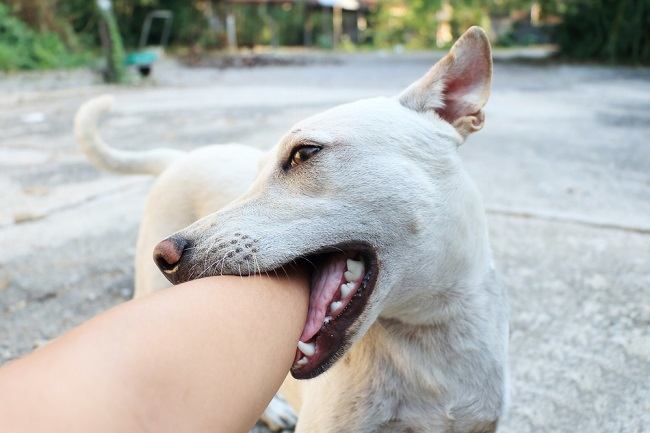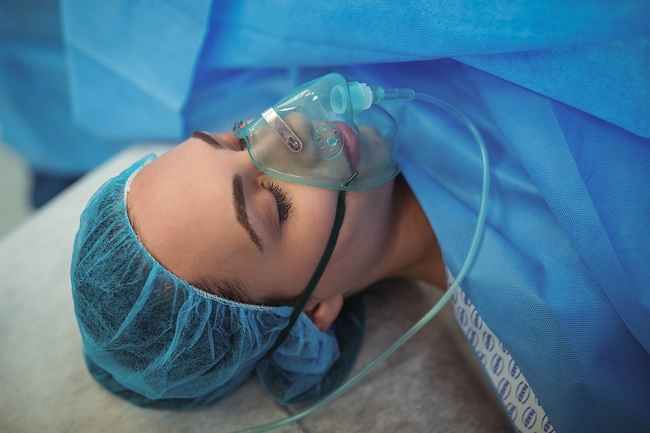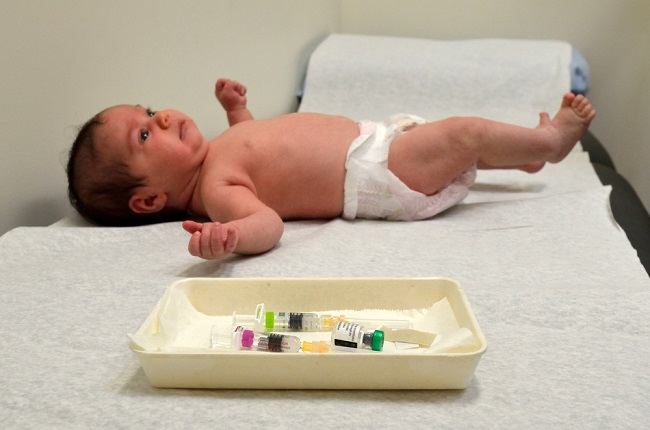Dermatomyositis is an inflammatory disease characterized by muscle weakness, skin rash, and muscle inflammation. This rare condition can affect both children and adults.
Dermatomyositis is thought to be associated with disorders of the immune system. Under normal conditions, the immune system functions to protect the body from infection. However, in dermatomyositis, the immune system attacks healthy body cells instead.

Causes of Dermatomyositis
Until now it is not known what causes dermatomyositis. However, this condition is thought to be related to autoimmune diseases, in which the immune system attacks healthy body tissues and causes inflammation.
In dermatomyositis, most of the inflammation occurs in the small blood vessels in the muscle tissue. This condition causes damage to healthy muscle fibers.
Dermatomyositis risk factors
Dermatomyositis can happen to anyone, but is more common in women than men. Dermatomyositis is also more common in adults aged 40–60 years and children aged 5–15 years.
Although often associated with autoimmune diseases, dermatomyositis is also more at risk for people with viral infections or cancer. This is thought to be related to the activation of the immune system that occurs when a person experiences a viral infection or cancer.
Symptoms of Dermatomyositis
Symptoms of dermatomyositis can appear suddenly or develop gradually over weeks or months. Symptoms include:
- A red or bluish rash appears on the face, eyelids, back, chest, knuckles, elbows, and knees, accompanied by itching and pain
- Weak muscles around the neck, shoulders, thighs, or hips that can get worse over time
- Hard lumps appear (calcinosis) under the skin of the knuckles, elbows, knees, and ankles
- Red spots appear (Gottron papules) that protrudes in the joints of the fingers and toes, elbows, or knees
- Easily tired or weak, even if only going up and down stairs, getting up from sitting, or raising your arms
- Scaly scalp with hair loss
- Difficulty swallowing (dysphagia)
- Weight loss for no reason
- Sensitive to light
- Lung disorders
- Hard to breathe
- Fever
When to go to the doctor
Immediately see a doctor if you experience muscle weakness accompanied by a rash on the skin. If given early, treatment will be more effective in restoring the patient's muscle strength and function.
Diagnosis of Dermatomyositis
The doctor will ask the patient's symptoms and medical history, followed by a physical examination. To confirm the diagnosis, the doctor will perform supporting examinations which include:
- Blood tests, to detect elevated levels of muscle enzymes such as creatine kinase (CK) and aldolase which can be a sign of muscle damage, and detect the presence of antinuclear antibodies (ANA)
- Chest X-ray, to detect damage to the lungs that sometimes occurs in people with dermatomyositis
- MRI scan, to see inflammation in the muscles using radio waves and a magnetic field
- Electromyography (EMG), to measure electrical activity in muscles
- Skin or muscle biopsy, to see inflammation in the muscle by taking a tissue sample in the skin or muscle and examining it in a laboratory
Dermatomyositis Treatment
Treatment of dermatomyositis aims to relieve symptoms and reduce the risk of complications. The method of treatment is by administering drugs, therapy, or surgery. Here is the explanation:
Drugs
The types of drugs that doctors can prescribe for dermatomyositis patients include:
- Corticosteroids, such as prednisone to reduce inflammation caused by the immune system response.
- Corticosteroid-sparing agents, such as azathioprine or methotrexate used concurrently with corticosteroids to suppress the potential side effects of corticosteroids
- Rituximab, to relieve symptoms if initial therapy fails
- Antimalarial drugs, such as hydroxychloroquine to treat skin rashes that don't go away
- Intravenous immunoglobulin (IVIG), which is therapy using healthy antibodies to inhibit the work of abnormal antibodies
Therapy
There are several therapies that can be done to relieve the symptoms of dermatomyositis. These therapies include:
- Physical therapy or physiotherapy, to restore and improve muscle strength and flexibility
- Speech therapy, to overcome speech difficulties due to disorders of the muscles in the face and larynx
- Therapeutic regulation of the type of food (diet), to treat chewing and swallowing disorders
In dermatomyositis patients who have calcinosis, the doctor will perform surgery to remove the calcium buildup in the patient's body to avoid further skin infections.
To help the treatment process, the doctor will advise the patient to use sunscreen and closed clothes when doing outdoor activities, especially during the day.
Dermatomyositis Complications
Some of the complications that may occur due to dermatomyositis are:
- Dysphagia or difficulty swallowing
- Aspiration pneumonia
- Difficulty breathing
- Calcium buildup in muscles, skin, and body tissues (calcinosis)
- stomach ulcer
- Malnutrition
- Weight loss
In addition to a number of complications above, dermatomyositis can also increase the risk of sufferers developing other conditions, such as:
- Raynaud's phenomenon, a condition that causes the fingers and toes, cheeks, nose, and ears to look pale when exposed to cold temperatures
- Connective tissue diseases, such as lupus, rheumatoid arthritis, scleroderma, or Sjogren's syndrome
- Heart disease, such as myocarditis, heart rhythm disturbances (arrhythmias), or heart failure
- Cancer, especially cancer of the cervix, lung, pancreas, breast, ovarian, or digestive tract
- Interstitial lung disease, which is a group of diseases caused by the connective tissue in the lungs
Dermatomyositis Prevention
As described above, the cause of dermatomyositis is still unknown. Therefore, it is not known how to prevent this disease. However, early treatment can prevent dermatomyositis from getting worse.









